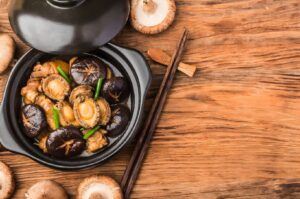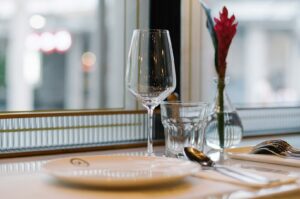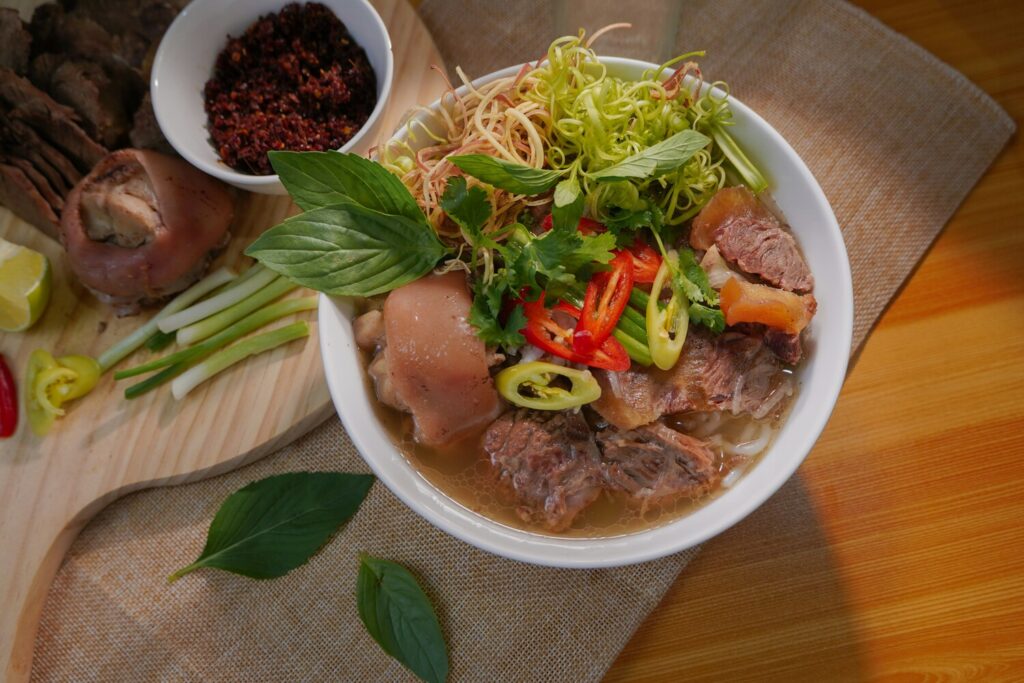
There’s a kind of magic at the Vietnamese table—a vibrant medley of flavors, colors, and aromas that draws you in and lingers long after the final bite.
Step beyond the classic bowl of beef noodle soup or the crowd-pleasing fried spring rolls, and you’ll discover a culinary landscape rich with rice noodles, fresh herbs, and culinary wisdom stretching back centuries.Let’s set out on a journey together, exploring the foundational flavors, regional distinctions, and cherished customs that define traditional Vietnamese food from north to south.1. The Five Fundamental Flavors
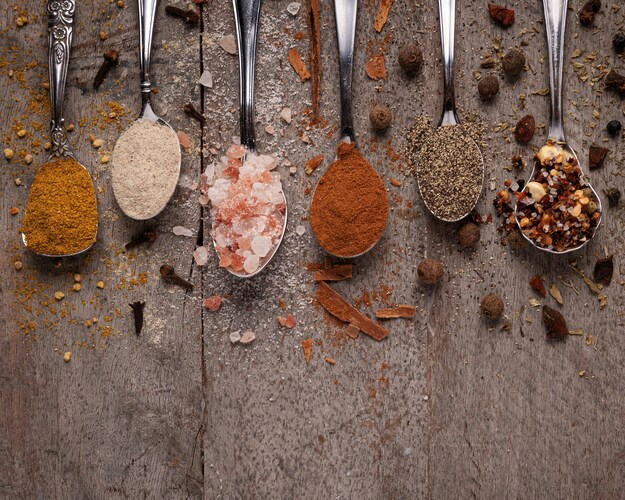
Imagine a meal that’s a playground for all your senses. Vietnamese cuisine is firmly rooted in the philosophy of ngũ vị, the five fundamental flavors: sweet, salty, bitter, sour, and spicy. The best Vietnamese dishes are masterclasses in balance—never letting any single flavor dominate.
A Vietnamese dish is often a riot of color, thanks to fresh herbs, pickled veggies, and green onions, making every plate as good for your health as it is for your palate.
2. Regional Diversity in Vietnamese Food

Vietnam’s geography and culture have shaped three distinct regional cuisines, each with signature creations and distinct flavors.
Northern Vietnamese Cuisine
The cooler climate and thousand-year-old capital give rise to subtle, elegant food. Beef noodle soup (pho) and bun cha—grilled pork served with rice vermicelli, fresh herbs, and a savory dipping sauce—are northern staples. Boiled chicken is also a popular protein option in pho, contributing to the dish’s flavorful broth. Here, you’ll often find delicate rice noodles, fried shallots, and a restrained use of spice, with dishes like chicken rice and noodle soup relying on the quality of ingredients and careful seasoning.
Central Vietnamese Food
Known for spice, intricacy, and historical finesse, Central Vietnamese food is the playground of bold flavors and artistry—comparable in complexity to Indian cuisine’s use of spice and aromatics, where every ingredient adds depth and character. From bun bo Hue, a fiery noodle dish with thick noodles, pork bones, minced pork, and shrimp paste, to cao lau, featuring uniquely springy noodles and fried pork, every dish is both a tradition and a celebration. Central cuisine famously uses rice paper wrappers and fresh herbs, often accompanied by shredded pork and savory peanut sauce.
Southern Vietnamese Cuisine
Here, food bursts with sweetness and light—think coconut milk-laced curries, broken rice (com tam) with grilled meats, fried eggs, and pickled carrots, and banh xeo, sizzling Vietnamese pancakes. These dishes originate from Southern Vietnam, reflecting the region’s unique culinary traditions.
3. The Role of Fresh Herbs
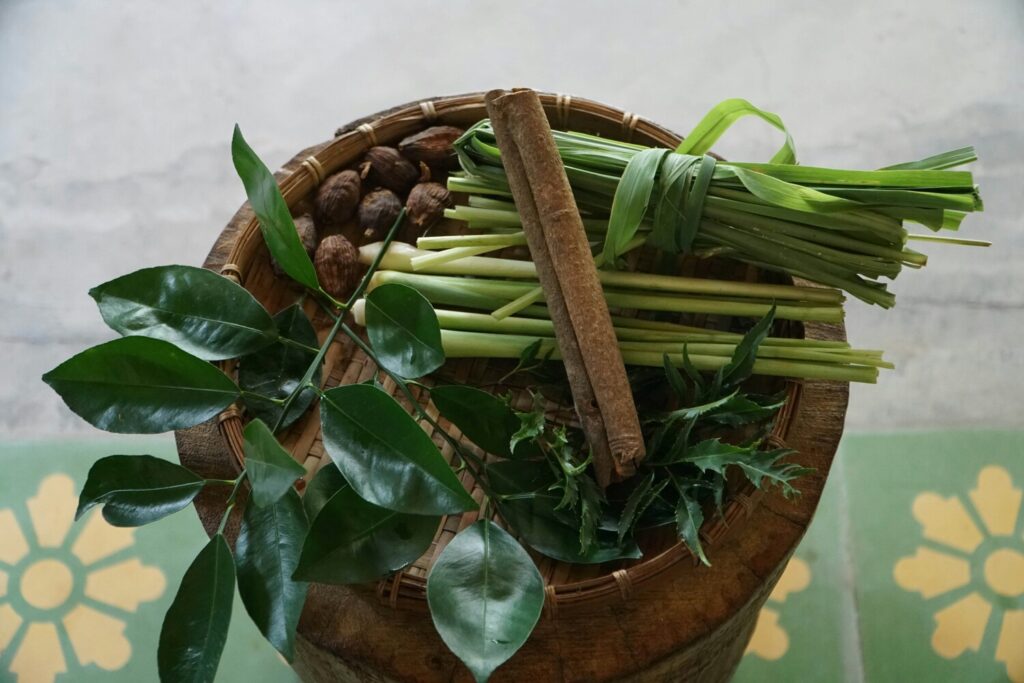
Ask any local and they’ll tell you: fresh herbs are the soul of Vietnamese food. Mint, cilantro, perilla leaves, fresh cilantro, and rau răm (Vietnamese coriander) aren’t just garnish but essential layers in nearly every meal.
Herb platters typically served alongside noodle dishes like bun cha, bun bo, or pho bring cooling brightness to spicy food and offer a gentle counterpoint to rich pork, grilled meats, or fried spring rolls. These herbs are chosen for their ability to aid digestion and promote wellbeing.
4. Nuoc Mam (Fish Sauce)
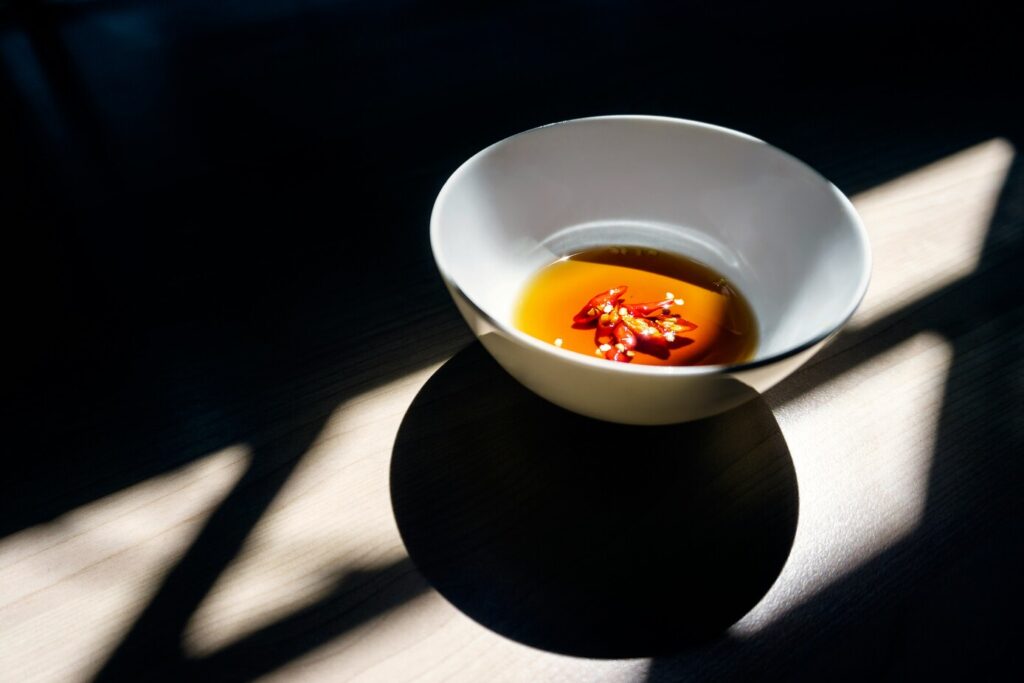
No ingredient is more vital to Vietnamese cuisine than fish sauce (nuoc mam). This potent umami elixir, crafted from fresh anchovies and sea salt, is aged in wooden barrels until transformed into a complex, amber liquid that anchors almost every Vietnamese dish.
Fish sauce is used across the country in everything from bun cha huong lien’s marinade to the essential dipping sauces for fried spring rolls, grilled pork, and even sticky rice. Each region tweaks its fish sauce—saltier in northern Vietnam, sweeter down south. It’s often blended with sugar, lime, chili, garlic, and water to create nuoc cham, the versatile dipping sauce that accompanies everything from rice paper spring rolls to grilled meats.
5. The Perfect Bowl of Pho with Rice Noodles
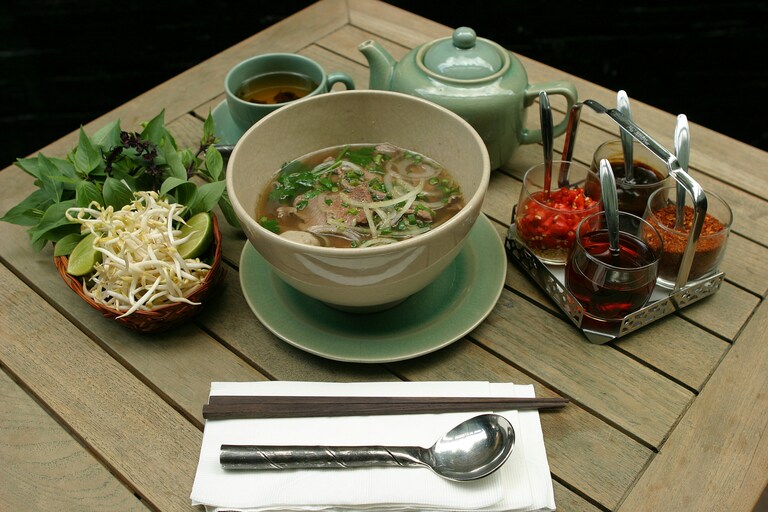
There’s a reason beef noodle soup (pho) is considered the quintessential Vietnamese dish. Pho begins with a clear, fragrant broth drawn from beef or chicken bones, charred onions, ginger, and spices, then poured over flat rice noodles. What makes a perfect bowl? Slices of beef or shredded chicken, green onions, bean sprouts, and a flourish of fresh herbs, often served with lime, chili peppers, and crispy shallots. Boiled chicken is also a classic protein option in pho, valued for its tender texture and the depth it adds to the broth.
6. Beyond Pho
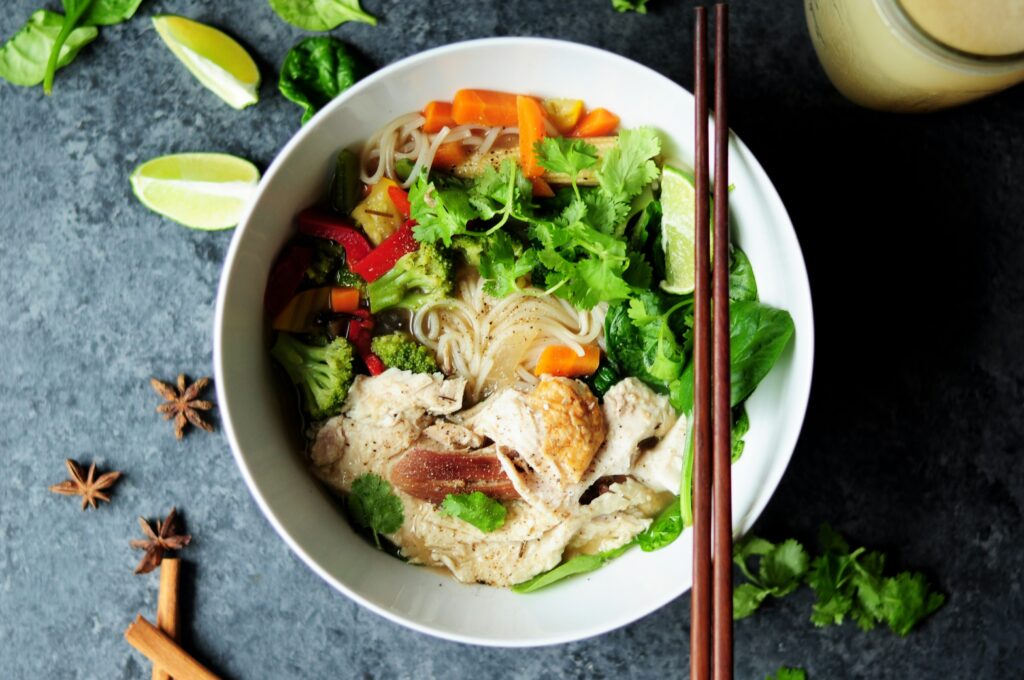
Pho is just the tip of the Vietnamese noodle universe.
Vietnam’s diverse noodle dishes showcase a variety of noodles, from delicate rice vermicelli to hearty flat noodles and even toasted sesame rice crackers, each adding a unique texture. Whether served in fragrant broths or paired with grilled meats and savory sausage, these dishes celebrate the country’s mastery of balancing flavors and fresh ingredients.Bun Cha
Bún Chả is a beloved Hanoi specialty that perfectly balances smoky, grilled pork with the lightness of vermicelli noodles. The dish is served with a tangy, sweet, and savory dipping sauce called nước chấm, along with fresh herbs and crunchy pickled vegetables, creating a harmonious blend of flavors and textures.Bun Bo Hue
Originating from the ancient city of Huế, Bún Bò Huế is renowned for its bold, spicy broth, which is simmered for hours with pork bones and lemongrass. This hearty soup features thick, chewy noodles, tender slices of beef, and the distinctive umami of fermented shrimp paste, offering a complex and warming experience.Cao Lau
Cao Lầu is a signature dish of Hoi An, famous for its unique, chewy noodles made from local water and ash, giving them a distinct texture and color. The dish is topped with crispy pork belly, crunchy peanuts, fresh herbs, and a light broth, combining smoky, nutty, and herbal notes in every bite.Spring Roll
Vietnamese spring rolls are celebrated for their translucent rice paper wrappers that encase an array of fresh ingredients like shrimp, pork, herbs, and vermicelli. Served cold or fried, they offer a refreshing and light appetizer that contrasts perfectly with richer dishes.7. Street Food Culture
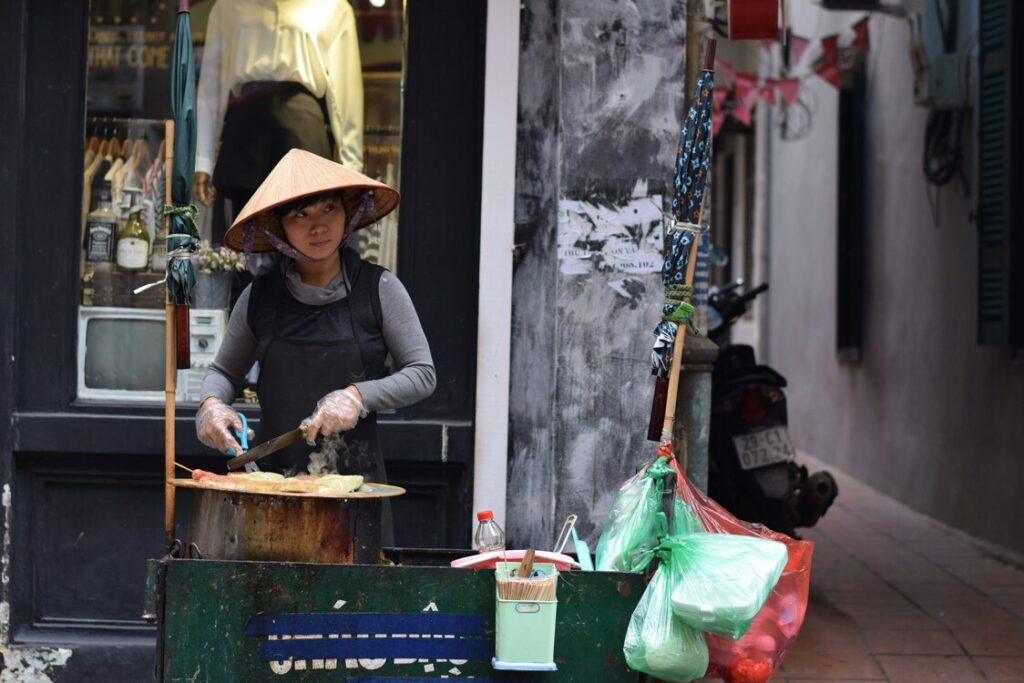
Vietnam’s street food is legendary, offering a dizzying roster of delicious food from sunrise to late at night. Morning crowds cluster around vendors using a hot pan to quickly fry sticky rice cakes over high heat, creating crispy textures and enhanced flavors, while lunch means fried spring rolls or fresh spring rolls wrapped in rice paper and packed with shrimp, ground pork, and fresh vegetables.
Evening markets are alive with broken rice bowls piled with shredded pork, fried eggs, chopped green onions, and sizzling grilled pork.8. The French Influence
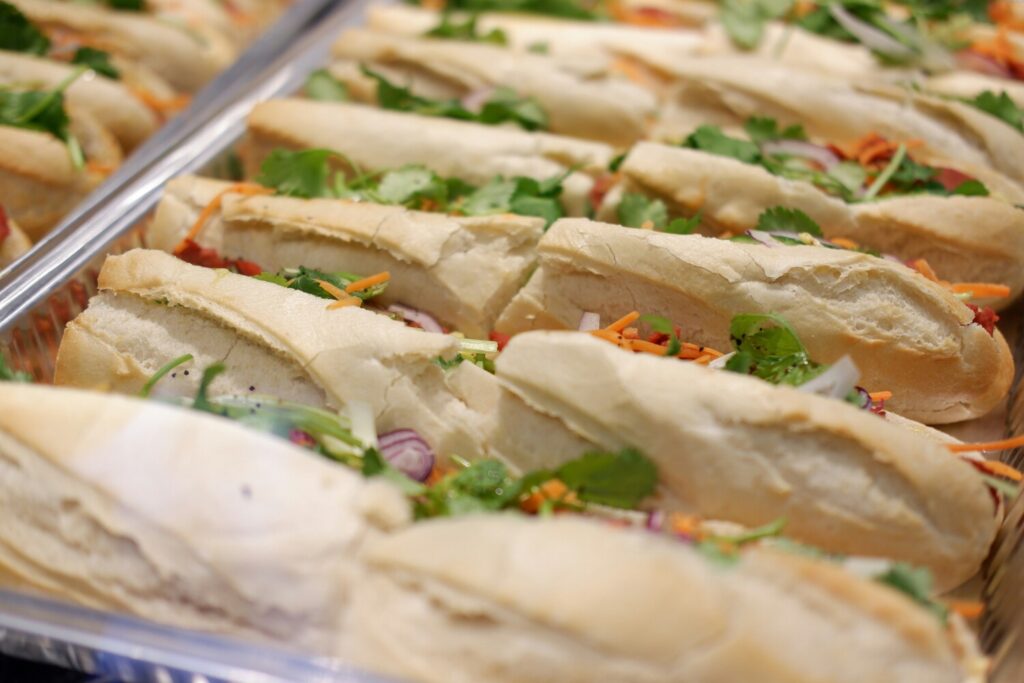
French colonial rule left a legacy that forever shaped Vietnamese cooking. The world-famous bánh mì sandwich wouldn’t exist without French baguettes, mashed with rice flour to yield that unique brittle crust. Stuff each roll with pâté, grilled meats, fresh herbs, pickled carrots, and sliced cucumber for a Vietnamese version of a Parisian classic.
Vietnamese coffee—brewed strong and dripped over sweetened condensed milk—is another gift from the French, enjoyed everywhere from northern Vietnam’s old cafés to Ho Chi Minh City’s modern coffee shops.
9. The Healthy Balance
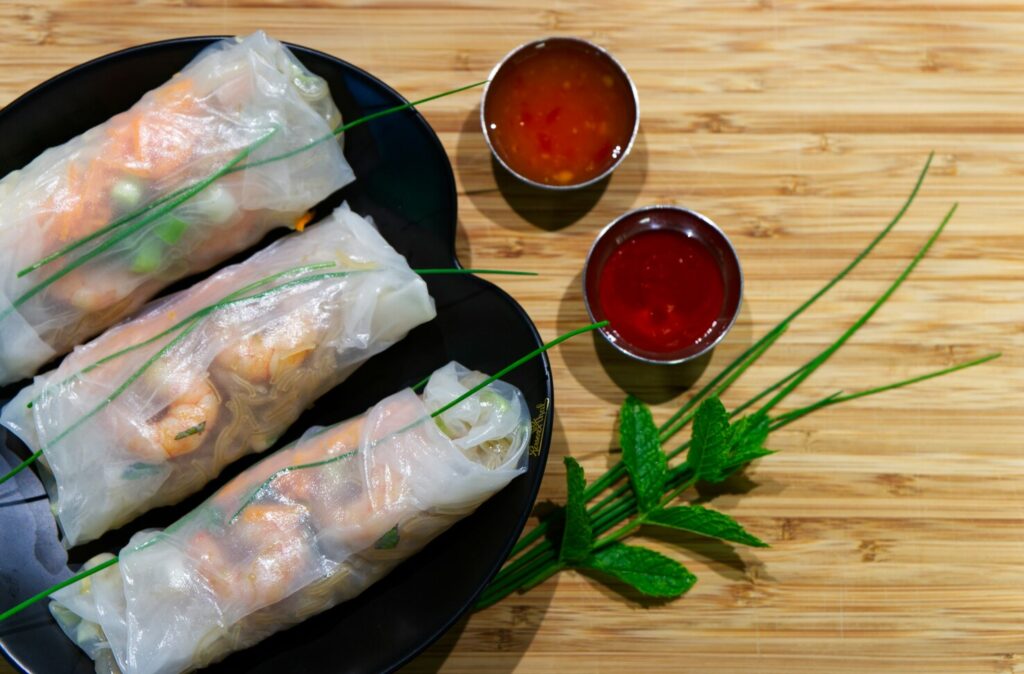
Traditional Vietnamese food is admired worldwide for its health benefits.
Protein portions are modest, while carbs come via broken rice, rice vermicelli, and rice noodles—often made from fractured rice grains for a slightly different texture and taste.
Minimal dairy and lighter cooking methods mean dishes feel fresh rather than heavy—similar to Thai cuisine, which also emphasizes fresh herbs, balance, and minimal use of heavy fats. Stir-frying, steaming, and grilling are preferred over deep frying, and sauces are built with fish sauce, peanut sauce, and lime—not cream or cheese.
10. Preserving Tradition While Embracing Innovation
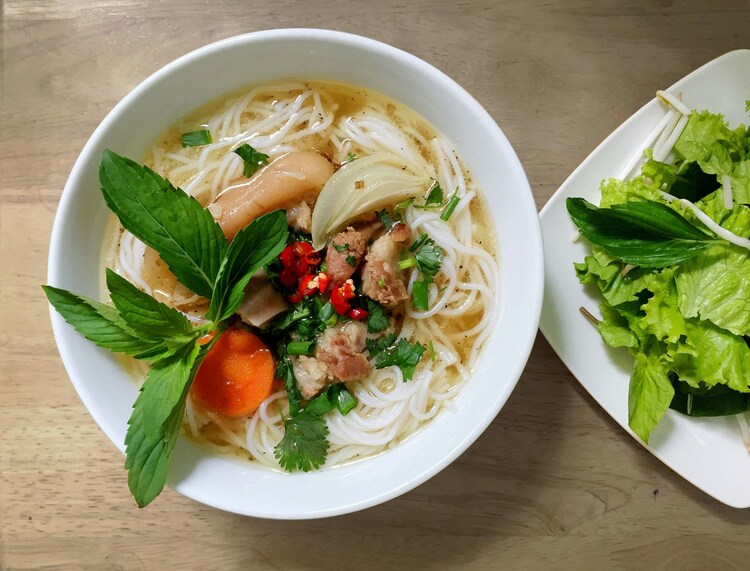
Vietnamese culture celebrates heritage while welcoming the new.
In Ho Chi Minh City, you’ll find chefs reinventing classic noodle dishes, creating vibrant bowls of bun bo or bun bo hue using local shrimp paste, fried shallots, or even spicy food accents like chili oil. At home, families adapt traditional Vietnamese recipes to fit modern tastes, adding more vegetables, swapping proteins, or experimenting with dipping sauces made from peanut or hoisin sauce.
Fresh spring rolls might now include avocado, or banh xeo stuffed with ground pork and mushrooms. This dynamism keeps traditional food exciting and relevant for young and old.
11. The Communal Table
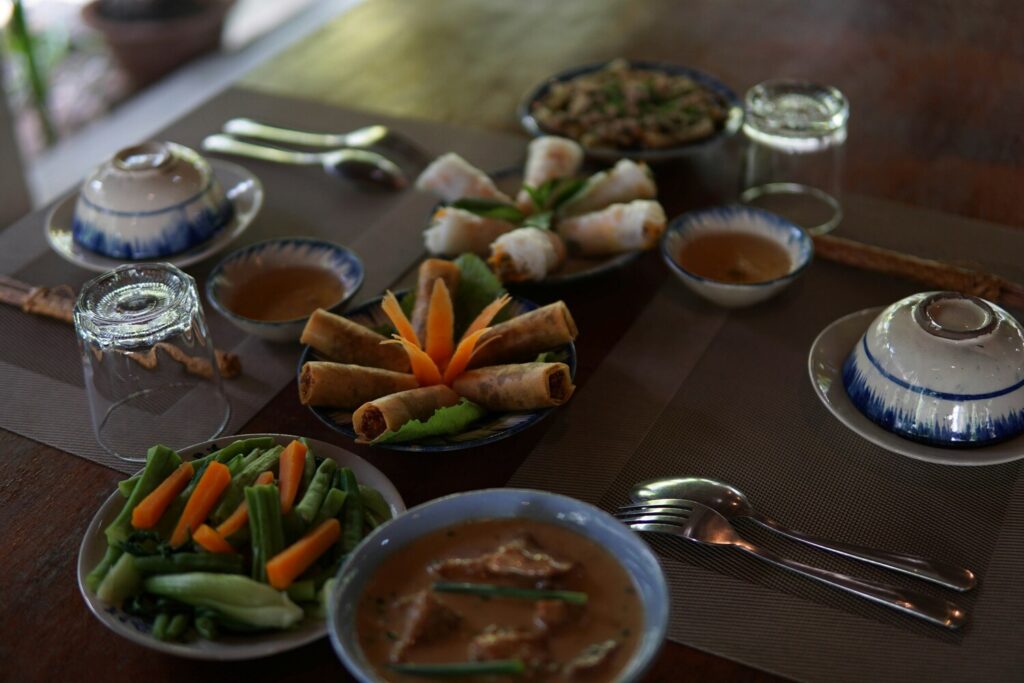
In Vietnam, dining is about the shared experience. Every meal is built for abundance: platters of bun cha, piles of fresh herbs, bowls of sticky rice, and plates of fried eggs, all meant to be personalized and passed around. Etiquette encourages respect—elders eat first, and everyone helps serve each other.
12. Seasonal Celebrations
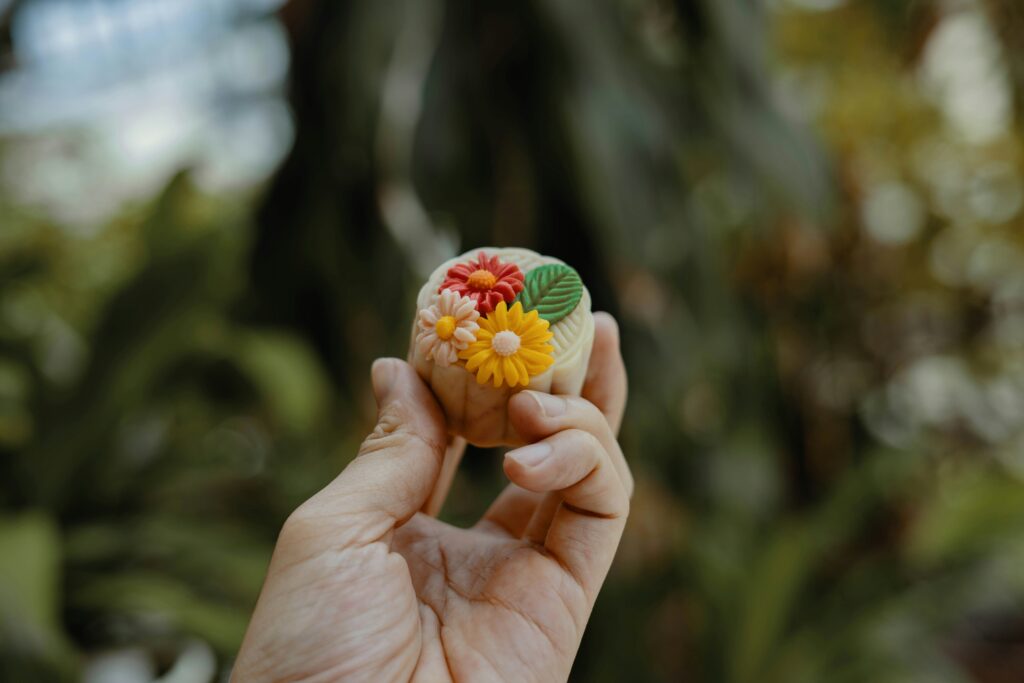
During Tet, the Lunar New Year, families gather to make banh chung—sticky rice cakes filled with mashed mung beans, fatty pork, and fragrant green onions, lovingly wrapped in banana leaves and steamed for hours.
The Mid-Autumn Festival brings sweet mooncakes stuffed with lotus paste, mashed mung beans, or salted egg yolk, all to be shared beneath lanterns with loved ones.
13. Beverages and Desserts

No Vietnamese meal feels truly complete without a sweet or refreshing finale. The country’s vibrant selection of desserts and beverages mirrors the diversity of its savory dishes, offering a sensory journey rich in texture, flavor, and tradition. Common ingredients like coconut milk, sticky rice, mung beans, and crushed peanuts frequently appear, creating unforgettable combinations of creamy, chewy, and crunchy.
Bánh Chưng & Bánh Tét
In the north, festive treats such as bánh chưng and bánh tét are central to celebrations like Tết, the Lunar New Year. These banana leaf-wrapped sticky rice cakes, filled with savory pork and mung beans, are steamed until tender and rich.While bánh chưng is square-shaped, bánh tét is cylindrical and typically served in slices with pickled vegetables and chili, delivering a balanced medley of sweet, salty, and spicy.Bánh Bèo
For something truly unique, bánh bèo offers a savory-sweet experience: delicate steamed rice cakes topped with mung bean paste, shrimp floss, and crispy shallots, served with a sweetened fish sauce blend. Bánh chuối, a warm banana and coconut pudding thickened with tapioca flour, brings comfort in every spoonful, especially when crowned with toasted peanuts and sesame seeds.Come Hungry, Leave Inspired
Step into the world of Vietnamese cuisine, where each bite is a marriage of rice noodles, fish sauce, grilled pork, and fresh herbs—woven together with texture and tradition. Whether enjoying bun cha at a bustling stall in Hanoi or savoring banh mi in Ho Chi Minh City, Vietnam’s culinary spirit is in every delectable, fragrant mouthful.
It’s this unforgettable balance of freshness, color, and depth that makes Vietnamese food not just a meal but a story, always worth savoring—and sharing.